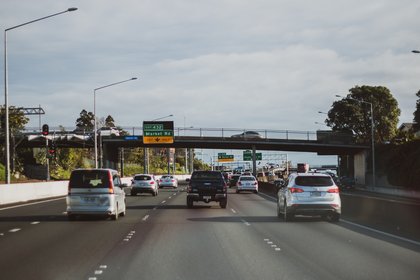
With Aotearoa New Zealand having one of the oldest vehicle fleets in the world, examining the average age of the vehicles provides insight into the efficiency, environmental risks and health and safety considerations associated with the vehicles on our roads.
The data pattern reveals that as socioeconomic deprivation increases, the number of older cars also increases, while the number of new cars decreases. The median age of cars is around 16 years in the most deprived areas, dropping to 12 years in the least deprived.
Newer cars, categorised within the zero to nine age range, constitute 40.6 per cent of vehicles in the least deprived areas (decile one), but make up only 21.7 per cent of vehicles in the most deprived areas (decile 10).
Principal Intelligence Analyst and report author Kirsty Craig says uncovering the link between vehicle age and socioeconomic deprivation offers valuable insights into potential implications for road safety and public health.
“As we have reported previously, people who live in areas of higher socioeconomic deprivation have higher injury hospitalisation rates and higher mortality rates from road traffic injuries. While vehicle crashes result from multiple factors, older cars may contribute, as newer vehicles tend to have more and better safety features, giving vehicle occupants more protection. Older cars also have wider impacts on health through higher emissions.”
Classic and vintage cars aged over 30 years were found across all neighbourhood deprivation levels and do not explain the elevated average ages observed in higher decile areas. Instead, classic and vintage cars were found to be more prevalent in lower deciles, contributing to a larger difference between the median and mean ages of vehicles in less deprived areas.
The recent report published by EHINZ used motor vehicle registration data from Waka Kotahi New Zealand Transport Agency and the New Zealand Index of Deprivation from 2018 to analyse all private passenger motor vehicles registered in the country as of December 2022.
EHINZ, based within Te Kunenga ki Pūrehuroa Massey University’s College of Health, is funded by the Ministry of Health to monitor and provide intelligence on the effect of the environment on the health of New Zealanders.
Read the full report here.

Kirsty Craig, Principal Intelligence Analyst with EHINZ.
Related news
Lowering notifiable blood levels reveals lead absorption remains a public health issue
Data analysed by Environmental Health Intelligence New Zealand (EHINZ) shows lead absorption remains a considerable issue in Aotearoa New Zealand, with Pacific peoples and older-aged men the most affected.

Not all Kiwi kids breathing easier despite decreasing asthma prevalence
The latest statistics from the Ministry of Health, analysed by Environmental Health Intelligence New Zealand (EHINZ) show the prevalence of medicated asthma has declined in children aged two to 14 years in 2020/21.

Lockdown sees lowest energy consumption levels in seven years
New data from the Ministry of Business, Innovation & Employment, analysed by Environmental Health Intelligence New Zealand (EHINZ), shows New Zealand’s total energy consumption in 2020 was the lowest it has been since 2013.
